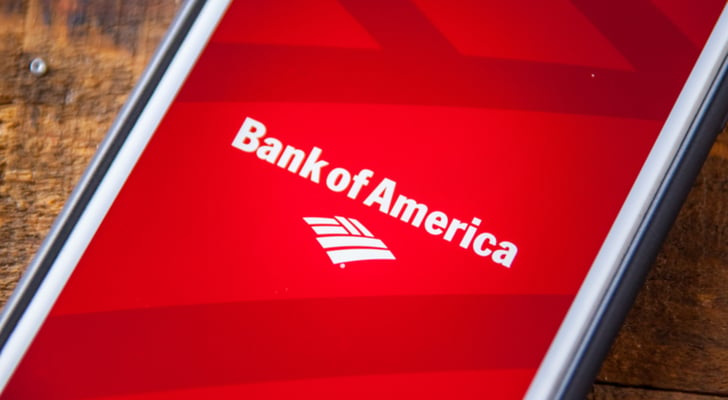Some might ask, why are you investing so prudently now? Most investors say they want to build the biggest nest egg they can to fund the best possible retirement when that time comes. Once that day arrives, then they’ll change their portfolio to focus less on growth and more on income.
The irony is, the stable stocks best suited to reliably fund a retirements are largely the same stocks you should arguably already own leading up to your retirement; consistency is crucial as you chip away at your financial goals.
To that end, here’s a run-down of retirement stocks you should probably already own even before you make working at a job a thing of the past. Separately or collectively, they provide a nice balance of growth and income, as well as a comfortable balance of risk and reward.
In most cases dividend — and dividend growth — is in the cards, yet not necessarily at the expense of capital appreciation as well. You’ll need that too, as inflation can and often does outpace marketwide dividend yields.
Retirement Stocks to Buy: AT&T (T)

Source: Mike Mozart via Flickr
Dividend Yield: 5.3%
There’s no denying AT&T Inc. (NYSE:T) has had its struggles. Wireless telecom as well as broadband have become commodities, and cable television is no longer just available through a literal cable.
Its recent effort to acquire Time Warner Inc (NYSE:TWX) has also run into some political pitfalls. When it’s all said and done though, T stock is entrenched in the markets it needs to be entrenched in, and it’s got the size and cash-stash to but what it needs to buy to remain competitive. It’s not going anywhere.
That said, whether its revenue growth is impressive or not, nobody can deny that AT&T is one heck of a reliable dividend payer. It has been paid out every quarter like clockwork since the mid-80’s, and grown the whole time. Newcomers are going to enjoy a 5.3% yield on their investment.
Top 10 Stocks To Buy For 2018: Bank of America (BAC)

Source: Shutterstock
Dividend Yield: 1.5%
Yes, Bank of America Corp (NYSE:BAC) was the same bank that seemed to struggle the most to shake off the impact of the subprime mortgage meltdown. It outright failed its so-called stress test in 2011, and though it passed it every year since then, 2014’s and 2015’s success were both conditional … and it’s not like BofA was asking regulators for any favors to begin with.
That struggle, however, may have been a blessing in disguise. Its tougher times appear to have made Bank of America a lean, mean banking machine, and one of the top retirement stocks for years to come.
Sure, the current dividend yield of 1.5% isn’t much to write home about, but what the company lacks in dividends it more than makes up for in growth potential. Between rising interest rates and the potential for a supercycle of economic growth, the next several years could be amazing ones for Bank of America.
Top 10 Stocks To Buy For 2018: Merck & Co (MRK)

Source: Shutterstock
Dividend Yield: 3.4%
It’s cliche to be sure, but people aren’t going to stop eating, they’re not going to stop using water, and they’re not going to stop taking their prescription pills that are (in many cases) keeping them alive. That’s good news for Merck & Co., Inc. (NYSE:MRK).
There are plenty of other picks from the pharmaceutical sector which would make fine retirement stocks. From a risk/reward vantage point though, Merck arguably makes more sense. Not only is its Keytruda cancer treatment a hit — with sales doubling year-over-year last quarter — but it has got plenty in the pipeline to replace that therapy once its patent protection inspires.
Its phase-three pipeline alone is worth an estimated market value of $37 billion, with Alzheimer’s treatment MK-8931 acting as its flagship R&D item … a drug which some believe could drive sales of $5 billion per year at its peak.
Top 10 Stocks To Buy For 2018: Wal-Mart Stores (WMT)

Source: Shutterstock
Dividend Yield: 2.2%
Credit has to be given where it’s due. While Target Corporation (NYSE:TGT) gave it the ol’ college try and Amazon.com, Inc. (NASDAQ:AMZN) certainly rattled its cage, Walmart Inc(NYSE:WMT) has finally figured out how to remain relevant on the modern consumer market.
One of those successes is, of course, on the e-commerce front. In its most recently-reported quarter, online sales grew 23%, and that pace has more or less become the new norm. The discounter has also learned that casting a wider net through higher-end brands like Bonobos and Moosejaw makes it easier to cross-sell to untapped markets.
In simplest terms, Walmart isn’t going to be dethroned as the world’s biggest retailer anytime soon.
Top 10 Stocks To Buy For 2018: Southern (SO)

Source: Desiree Kane via Flickr
Dividend Yield: 5.2%
No list of retirement stocks to mull would be complete without at least one utility stock. Even when times are tough, consumers find a way of keeping the lights on.
One of the best-of-breed choices among utility stocks is Southern Co (NYSE:SO), which serves nine million customers, mostly in the southern part of the United States.
Delivering electricity isn’t a simple or a cheap business, to be fair. In fact, cost overruns and delays at a couple of new facilities helped send SO shares to new 52-week lows last week. They’re just temporary headwinds though, which Southern has shrugged off before. In the meantime, the pullback has driven the well-protected dividend yield up to 5.2%, which is better than the industry’s current average.
Top 10 Stocks To Buy For 2018: American Water Works Company (AWK)

Source: Craig Dietrich Via Flickr
Dividend Yield: 2%
For the same reason consumers can’t turn off their electricity, they can’t turn off their water no matter how unaffordable it feels. That’s good news for American Water Works Company Inc(NYSE:AWK), which operates water utility services in sixteen different states.
Calling a spade a spade, water utilities are a legalized monopoly … even more so than electric utilities or natural gas utilities are. Although all markets are theoretically open to competition, in reality the barriers to entry in the water delivery market are enormously high. That’s how water prices for consumers have steadily risen for the past ten years even though consumption has fallen.
These companies generally get whatever price increase they want, as local regulators are generally terrified to put up a fight that could prove disruptive. (Try going without clean, potable water for just one day.)
American Water Works Company shareholders aren’t complaining, of course. The stock has more than doubled over the course of the past five years, and that’s not counting the dividends it has paid along the way.
Top 10 Stocks To Buy For 2018: Intel (INTC)

Source: Shutterstock
Dividend Yield: 2.4%
Intel Corporation (NASDAQ:INTC) for a retirement portfolio? The same Intel that makes computer parts and other highly cyclical technological components?
In a word, yes.
It’s not quite as aggressive as it sounds, particularly when bearing in mind that you’ll want some stable growth during your retirement years. Intel is positioning to provide just that, venturing out to a more diversified product base than computer processors that drove it to prominence in the 90’s. Graphics processors, self-driving cars and networking solutions are a growing part of the revenue mix, and the organization is finally thinking more in terms of solutions than products.
There’s also the not-so-minor dividend, which Intel just raised another 10% for this year. Its trailing yield is 2.4%, and it has paid — and increased — quite reliably for more than a couple of decades.
Top 10 Stocks To Buy For 2018: Visa (V)

Source: Shutterstock
Dividend Yield: 0.6%
While blockchain may be the future of money, the world’s still going to need middlemen to make it easy for consumers and business to use. In the meantime, the world needs a means of facilitating commerce the old-fashioned way. That’s credit card icon Visa Inc (NYSE:V), which not only has the most market share in the business, but through 2016 was widening its lead.
The company isn’t resting on its laurels though, well aware that times are always changing. It recently decided actual signatures would no longer be required to make purchases with cards that have a chip in them, and it’s currently testing a user-authentication platform that requires a fingerprint … the first of its kind for the industry.
Top 10 Stocks To Buy For 2018: Realty Income (O)

Source: Llima Orosa via Flickr
Dividend Yield: 5%
In the same sense that income-oriented utility stocks make for solid retirement investments, no list of retirement stocks to mull is complete without at least one real estate investment trust (or REIT), which are explicitly designed as tax-efficient ways to deliver rental income to shareholders. And one of the top names in the game is Realty Income Corp (NYSE:O), which owns shopping centers, renting out spaces to retailers.
It seems like a rough business to be in these days, with the so-called “retail apocalypse” upon us, with even the biggest names in the business seeming to close a few more stores than they’ve closed in the past. That worry is a big part of the reason O shares have fallen 22% since their mid-2016 peak.
As it turns out though, Realty Income is handling the headwind better than one might expect. Sales and earnings were up in 2017, and they’re projected to grow again in 2018. The dividend is along for the ride; the REIT boasts 81 consecutive increases in its quarterly payout.
Top 10 Stocks To Buy For 2018: Boeing (BA)

Source: Phillip Capper via Flickr
Dividend Yield: 1.8%
Last but not least, add aircraft maker Boeing Co (NYSE:BA) to your list of retirement stocks to own before and after you retire.
If you think passenger jets and military aircraft are cyclical, you’re 100% right. Those cycles aren’t exactly aligned with broad economic cycles though, so at the very least a stake in Boeing is a counter-cyclical position.
More than that though, any down-cycle headwind Boeing may face in the future is likely just a mini down-cycle within a much bigger bullish super-cycle. Boeing believes the global industry is going to take delivery of 41,000 new airplanes over the course of the coming 20 years just to keep up with growing demand for air travel. For perspective, there are only about 23,500 commercial aircraft in use now.
It’s the kind of trade that requires a very long-term mindset, but retirement can last a long, long time. So can the time needed to build that nest egg.










